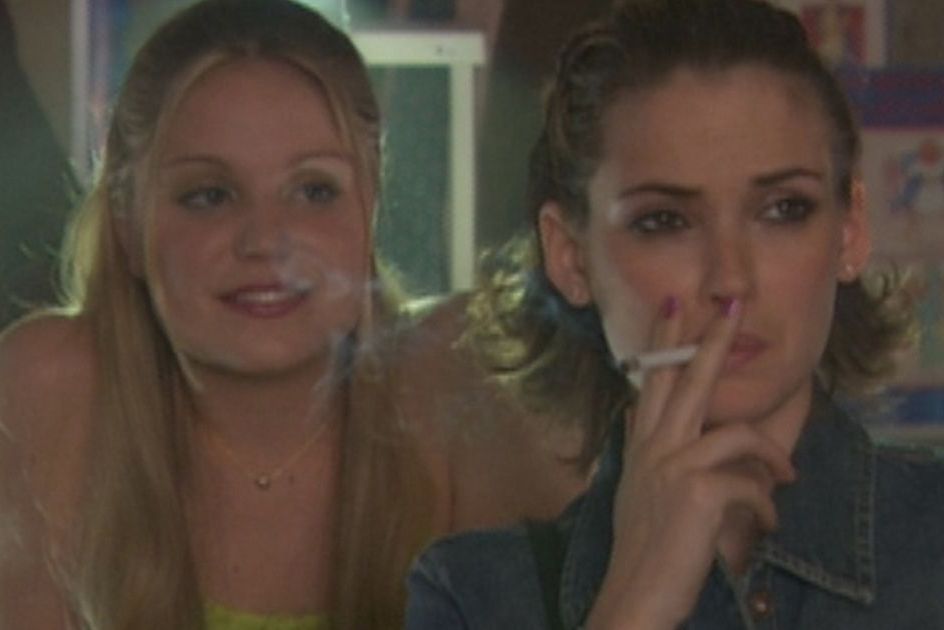Comedy Central’s riotously weird series Strangers With Candy—which lasted for three seasons, until it was cancelled in favor of a show called Strip Mall—turns 20 this year. As a millennial, afterschool specials were before my time, and SWC was my introduction to that format. Unlike the afterschool specials of the 1970s and 1980s, however, Strangers With Candy still holds up. The series—which featured Amy Sedaris as 46 year-old high school freshman Jerri Blank, and Stephen Colbert and Paul Dinello as narcissistic teachers involved in a secret relationship—was originally inspired by The Trip Back, a 1970s-era public service announcement (PSA) that featured former sex worker and heroin addict Florrie Fisher speaking to a group of high school students. Strangers With Candy, however, is frequently more outrageous than its source material, and is worth a watch for fans of comedies about terrible people doing horrible things.
Strangers With Candy nicely showcases some of Stephen Colbert and Paul Dinello’s comedic talents, but its biggest draw is Amy Sedaris and her gloriously unhinged performance as Jerri Blank. Jerri is not your average high school protagonist; not only is she openly racist (most often towards Orlando, her best friend and the one SWC character who actually has a moral compass), a delinquent, and self-centered to the point of screwing her fellow students over regularly, but she does not learn from her mistakes so much as continue to make bad choices over and over. If you’re confused as to why anyone would want to watch a show with such an unlikeable lead character—well, in the twisted world of Strangers With Candy, nearly every character is unlikeable, from Colbert and Dinello’s self-absorbed, closeted teachers to Flatpoint High School’s authoritarian principal Onyx Blackmon, portrayed by Greg Hollimon. The supporting cast’s work holds up well, too—Deborah Rush is frequently great as Jerri’s awful stepmom Sarah, and Larc Spies brings a menacing quality to his performance as Jerri’s popular brother Derek.
That the show hews closely to the “life lesson” learned at the end of 1970s-era afterschool specials could get tiresome, but Strangers With Candy’s writing is so sharp that the repetitive nature of Jerri’s “I’VE GOT SOMETHIN’ TO SAAAAAAY” epiphanies at the end of each episode are opportunities for comedy instead of actually learning something—Jerri, after all, always learns the wrong lesson from her misadventures. Whether she’s getting kicked out of a cult because its members find her annoying (the two-part episode “Blank Stare” from season 2) or dating a new student who turns out to be the son that she gave up for adoption 17 years prior (“Bogie Nights,” season 1), Jerri faces the obstacles of high school with a wicked combination of self-delusion, below-average intelligence, and a deep conviction that she is attractive and alluring.
While not all of the episodes have aged well—particularly “Who Wants Cake” from season 1, in which the word “retardation” figures heavily—many of the wrongheaded lessons that Jerri learns on Strangers With Candy are hilarious. My personal favorite comes from season 2’s “Behind Blank Eyes,” in which, after connecting with a blind student at Flatpoint, Jerri decides to join him “among the sightless”—a process that involves her tying a bandana around her eyes as a blindfold, then venturing out into the world. It’s a sequence that provides some unintentional commentary on well-meaning disability simulations that do not actually portray disability in a meaningful way—just as importantly, it demonstrates how Strangers With Candy paved the way for many TV shows with unlikeable characters who make questionable choices, such as It’s Always Sunny in Philadelphia, Rick & Morty, You’re the Worst, and Broad City, among others. While Stephen Colbert and Paul Dinello have moved on to The Late Show With Stephen Colbert on CBS, and Sedaris has taken her skewed brand of humor to TruTV’s At Home With Amy Sedaris, Strangers With Candy remains a fine example of the trio’s early work—and a must-watch for comedy fans.


An excellently written article about a classic, often overlooked (and too short-lived) television comedy! series. Outstanding for its performances, as well as its unique take on American high schools and the foibles integral to rites of passage from adolescence to adulthood, I’m so happy that Jerri never quite made the grade. Perhaps she’s still wandering the hallowed halls of Flatpoint High!